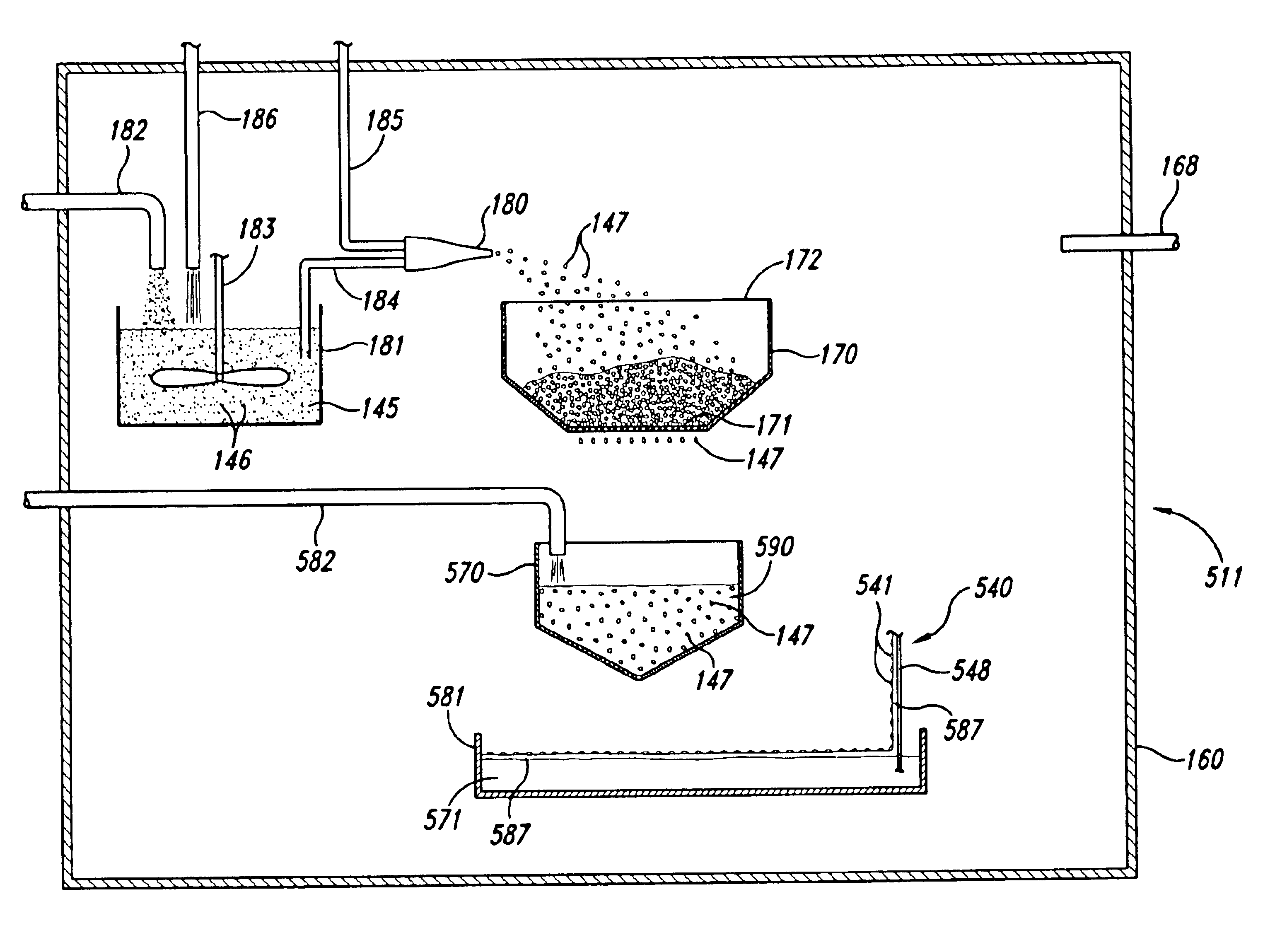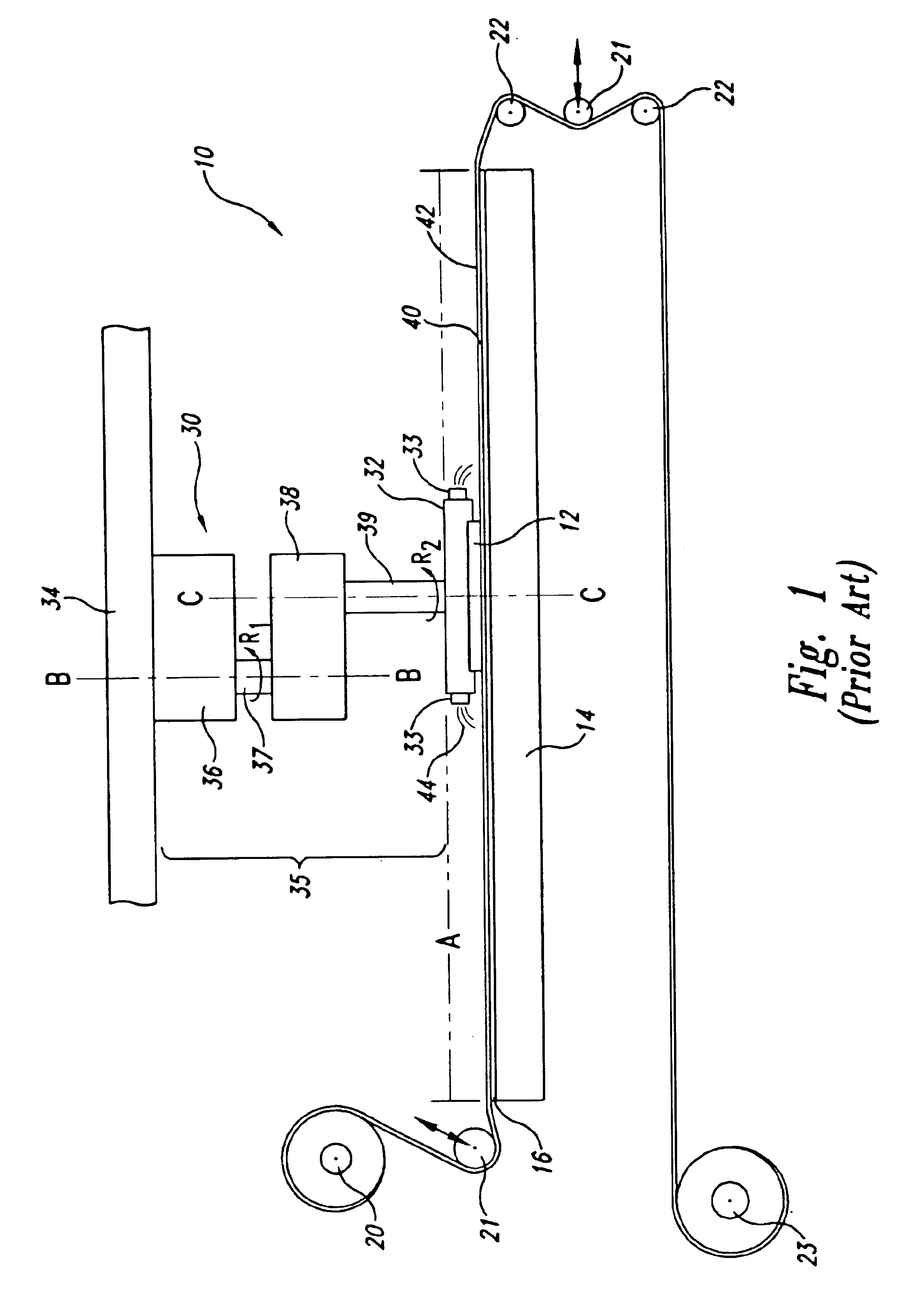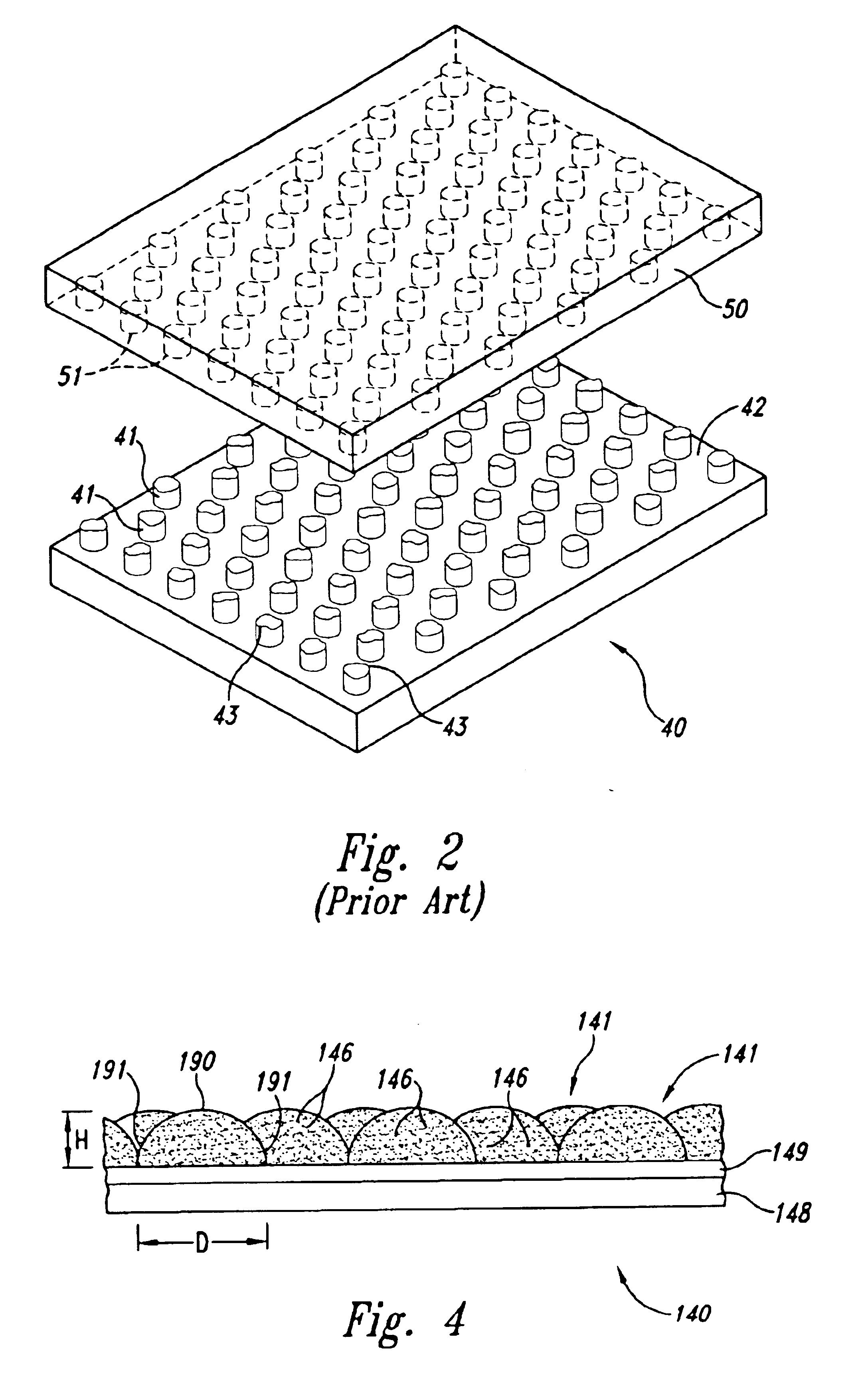Method and apparatus for forming a planarizing pad having a film and texture elements for planarization of microelectronic substrates
- Summary
- Abstract
- Description
- Claims
- Application Information
AI Technical Summary
Benefits of technology
Problems solved by technology
Method used
Image
Examples
Embodiment Construction
The present disclosure describes planarizing media and methods and apparatuses for forming planarizing media for chemical and / or chemical-mechanical planarizing of substrates and substrate assemblies used in the fabrication of microelectronic devices. Many specific details of certain embodiments of the invention are set forth in the following description and in FIGS. 3-6 to provide a thorough understanding of these embodiments. One skilled in the art, however, will understand that the present invention may have additional embodiments, or that the invention may be practiced without several of the details described below.
FIG. 3 is a partially schematic side elevational view of an apparatus 111 for forming a planarizing pad 140 from a planarizing pad material 145 in accordance with an embodiment of the invention. The apparatus 111 can include a nozzle 180 that separates the planarizing pad material 145 into discrete particles 147. The particles 147 collect in a hopper 170 that distribu...
PUM
| Property | Measurement | Unit |
|---|---|---|
| Fraction | aaaaa | aaaaa |
| Fraction | aaaaa | aaaaa |
| Length | aaaaa | aaaaa |
Abstract
Description
Claims
Application Information
 Login to View More
Login to View More - R&D
- Intellectual Property
- Life Sciences
- Materials
- Tech Scout
- Unparalleled Data Quality
- Higher Quality Content
- 60% Fewer Hallucinations
Browse by: Latest US Patents, China's latest patents, Technical Efficacy Thesaurus, Application Domain, Technology Topic, Popular Technical Reports.
© 2025 PatSnap. All rights reserved.Legal|Privacy policy|Modern Slavery Act Transparency Statement|Sitemap|About US| Contact US: help@patsnap.com



